Let’s make a deal: October is Early Order Program time
Superintendents across the country have their No. 2 pencils ready… It’s October, and that means Early Order Program time.
Steve Wright in Florida has three Early Order Program (EOP) brochures on his desk. Damon Di Giorgio in Delaware just got done speaking with Syngenta about their EOP. Todd Fyffe, in Illinois, knows that as soon as the Windy City Classic wraps up at his course, it’ll be time to jump into the EOPs. And on the West Coast, Josh Lewis, in Washington, says the 2015 U.S. Open will be here before he knows it… but in the meantime, it’s EOP time.
“EOPs are hugely important, I think everyone has tight budgets these days,” says Fyffe, golf course superintendent at Westmoreland CC in Wilmette, Ill. “Plus, I like having that peace of mind, knowing that my plan is set.”
Be a hero
All superintendents know what an Early Order Program is, but for the copies of the magazine that might find their way into the men’s locker room, a quick explanation.
Every October, superintendents are presented with the opportunity to make their chemical purchases for the upcoming season. Based on various savings methods, and by making an early commitment to buy products such as fertilizers, insecticides, fungicides, herbicides and plant growth regulators, turf managers can enjoy a discount on the products they’ll be applying to their golf courses the next year.
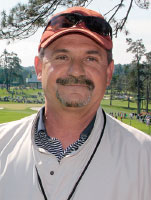
Headshot: Jeff Markow
Jeff Markow, CGCS at Cypress Point Club in Pebble Beach, Calif., says he loves his EOPs.
“They’re the easiest thing to participate in because it’s a benefit for the economics of the club, and it’s great for us to have a reasonable inventory on hand,” he says. “And the best thing is you can make it so it’s tailor-made for your operation.”
Wright, a CGCS and the director of operations at Boca West CC in Boca Raton, Fla., says he plans to maximize his 2015 buy through his EOP, allowing him a savings of a whopping 15 to 20 percent.
“I’m dealing with 72 holes here, so I can really ramp up the savings,” says the past president of the Palm Beach GCSA. “The club wants to make sure I’m using all the product, so if I’m using it and I’m saving 20 percent? The club is all-in on that deal.”
Superintendents don’t have to be at one of the top courses in the world or a 72-hole facility to take advantage.
Bill Irving, superintendent at the 18-hole Lawrence (Kan.) CC, says his use of EOPs makes him a hero in the general manager’s office.
“I just turned in a $1,500 rebate check from Syngenta,” he says. “I got a double-rebate bonus, I paid on time, and LCC gets a check in the mail. It’s nice to turn that into my boss, and then she tells me to put it right back into our chemical budget.”
Jeff Smelser, CGCS at Galveston (Texas) CC, puts it another way.
“In the big scheme of things, the golf course makes all the money, but (the maintenance department) doesn’t bring in cash everyday like the food and beverage department does, like the pro shop does,” he says. “All we ever do is spend money. So when there’s an opportunity to get a rebate, and I’m not paying extra money to get that rebate, that’s always a good thing. When I go give my general manager, or my board of directors, a check for a rebate from Syngenta or BASF, whoever, it helps.”
Buyer beware
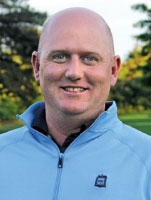
Headshot: Todd Fyffe
Of course, there are challenges to such plans. Even a promise of savings can be a bad investment if the EOP isn’t carefully considered and executed.
“You always have to consider the time, the value, the money,” says Dan Dinelli, CGCS at North Shore CC in Glenview, Ill. “If I tie up too much of the club’s money, and I’m only saving 2 or 3 percent, and the club has to borrow that money, I’m probably not really saving anything.”
Dinelli says he used to participate in EOPs more in the old days.
“It’s like looking at the Sunday newspaper when you’re shopping for a TV,” he says. “It might be on sale today, but if you miss out, you feel left out. They’re good to have but at the end of the day they can be confusing.”
Another challenge can be storing product.
Scott Hall, superintendent at Raritan Valley CC, Bridgewater, N.J., dealt with that issue when he first arrived at his course four years ago.
“I fought for more storage area for chemicals, fertilizers, etc.,” Hall says. “By getting more storage, I’m able to take advantage more of EOPs that require you to take delivery before the first of the year. Lack of storage space might be a hiccup for some folks.”
Fyffe says that his storage area can get pretty tight. The crew does a good job of keeping things organized. But some vendors will also lend a hand.
“We work with some pretty good companies,” he says, mentioning BASF, Syngenta, Aquatrols and Bayer by name. “They’ll hold onto the product until April 1st, so we don’t get stacked up too high.”
Lawrence Country Club’s Irving says EOPs can be a double-edged sword. While he loves them, he still has to be smart about them.
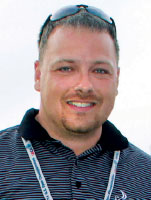
Josh Lewis
“(The vendors) would all love you if you ordered everything by the end of October. Then you’re on their books this year,” he says. “But if I buy from three different programs? That’s a lot of money.”
In the end, mastering EOPs might be like mastering the health of greens. Everyone does it a little differently, and what works perfectly at one course might not work at the course down the street.
“I think it comes down to each person and each property, and if they want to take advantage of the terms, if they’re on a fiscal year versus a calendar year, and how much money they’ve got set aside to play in the EOPs,” says Josh Lewis at Chambers Bay Golf Course, University Place, Wash. “There is a lot of flexibility and a lot of potential, but it still depends on the club.”
An easy A
So how much agonizing does it take to get through the EOP process?
Somewhat surprisingly, according to the 10 superintendents we talked to for this story, not much.
“We plan out our chemical use throughout the year, and based on that spray program, we achieve what we are going to order in our EOP,” says Eric Frazier, CGCS, director of agronomy at Willow Oaks CC in Richmond, Va. “I always leave a few gaps in there, but hopefully you’re able to get everything in pre-planning.”
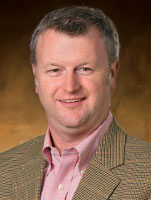
Headshot: Eric Frazier
“A lot of it is your previous year’s records,” says Lewis. “You know your acreage, you know your spray rates and the foundation of your plan. It’s hard to get it 100-percent accurate, but you can definitely get close.”
Frazier adds that a lot of it is about being prepared.
“That gives you the best opportunity to take advantage of the EOPs and navigate the different ones,” he says. “You have to do your homework before you get in there.”
Todd Fyffe is in his second year as superintendent at Westmoreland CC. He says he feels more confident going into this EOP season than he did last year. When he was an assistant superintendent, he observed his mentor, Frank Herry, but it was a different ballgame the first time he did it himself.
“There’s that question in your head, ‘Did I buy too much?’” Fyffe says. “But eventually it gives you peace of mind. You know you have the plan set. There will always be things that come up, but having a game plan really helps.”
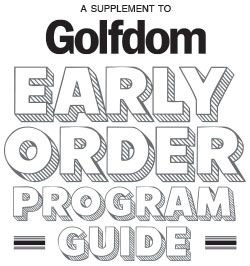
Graphic: Golfdom Magazine
Smelser agrees that sometimes there’s a feeling of stress when placing that order for tens of thousands of dollars, when the next golf season feels so far away.
“I always worry about if I spent too much. When I place my order, I’m always asking myself, ‘Did I go way over budget?’” Smesler says. “Really, I never do, but I always worry for it. When you’re spending $70,000, (you ask) how am I going to fit that into my budget next year?”
But the good news? It always works out, so far.
“Every year is a major win,” Smelser says. “Every year, the EOPs save me money.”
In early October, Golfdom sent out a survey to its readers asking for their opinions on Early Order Programs. A $100 gift card for a randomly selected participant was offered as an incentive. In all, we received 332 responses.









